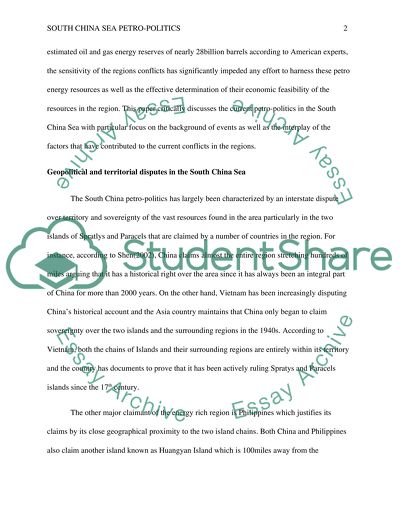Cite this document
(“South China Sea petro-politics Term Paper Example | Topics and Well Written Essays - 1750 words”, n.d.)
South China Sea petro-politics Term Paper Example | Topics and Well Written Essays - 1750 words. Retrieved from https://studentshare.org/history/1464725-south-china-sea-petro-politics
South China Sea petro-politics Term Paper Example | Topics and Well Written Essays - 1750 words. Retrieved from https://studentshare.org/history/1464725-south-china-sea-petro-politics
(South China Sea Petro-Politics Term Paper Example | Topics and Well Written Essays - 1750 Words)
South China Sea Petro-Politics Term Paper Example | Topics and Well Written Essays - 1750 Words. https://studentshare.org/history/1464725-south-china-sea-petro-politics.
South China Sea Petro-Politics Term Paper Example | Topics and Well Written Essays - 1750 Words. https://studentshare.org/history/1464725-south-china-sea-petro-politics.
“South China Sea Petro-Politics Term Paper Example | Topics and Well Written Essays - 1750 Words”, n.d. https://studentshare.org/history/1464725-south-china-sea-petro-politics.


